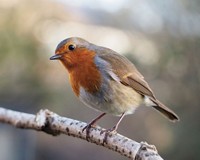Advertisement
Grab your lab coat. Let's get started
Welcome!
Welcome!
Create an account below to get 6 C&EN articles per month, receive newsletters and more - all free.
It seems this is your first time logging in online. Please enter the following information to continue.
As an ACS member you automatically get access to this site. All we need is few more details to create your reading experience.
Not you? Sign in with a different account.
Not you? Sign in with a different account.
ERROR 1
ERROR 1
ERROR 2
ERROR 2
ERROR 2
ERROR 2
ERROR 2
Password and Confirm password must match.
If you have an ACS member number, please enter it here so we can link this account to your membership. (optional)
ERROR 2
ACS values your privacy. By submitting your information, you are gaining access to C&EN and subscribing to our weekly newsletter. We use the information you provide to make your reading experience better, and we will never sell your data to third party members.
Synthesis
Guiding Migration
Radical chemistry could help birds use Earth's magnetic field as a compass
by Sarah Everts
May 1, 2008

Migratory birds navigate for thousands of miles, relying on Earth's magnetic field as a guide, but the precise mechanism they use to determine their position and directional information remains unresolved.

Now, a radical-chemistry-based hypothesis for how birds use Earth's magnetic field as a compass has received a boost. British and American scientists have built a chemical model that lends some credence to the radical-chemistry hypothesis of magnetoreception (Nature, DOI: 10.1038/nature06834).
Specifically, the hypothesis argues that incident light on photoreceptor proteins in a bird's retina could create radical pairs. The fate of these short-lived reaction intermediates, such as returning to a resting state or reacting to give a different radical product, could be modulated by Earth???s magnetic field and could therefore act as a magnetic field sensor or compass.
One of the biggest concerns with the radical-chemistry hypothesis has been that no radical pair reactions have been shown to be modulated by magnetic fields as weak as Earth's, says Peter J. Hore, a chemist at Oxford University. So Hore collaborated with chemists Christiane Timmel at Oxford and Devens Gust at Arizona State University to build a carotenoid-porphyrin-fullerene model system that produces radical electron pairs that are measurably affected by Earth's magnetic fields.
"We've shown for the first time that a radical pair chemical reaction can respond to a field as weak as Earth's," Hore says. "If we can do it in a lab, then perhaps animals can do it in nature—although presumably more efficiently and sensitively."
The fact that the molecule can detect Earth's magnetic field is a "big step toward the proof of principle" for the radical-chemistry model of avian magnetoreception and provides a good working model of the system, says Thorsten Ritz, a biophysicist at the University of California, Irvine.
Many researchers have postulated that radical pairs in an avian photoreceptor protein called cryptochrome could be the biological source of radical-chemistry magnetoreception. Hore's model will help establish methods for detecting magnetoreception in the protein, Ritz notes.
Conversely, Sönke Johnsen, a biologist at Duke University, is not convinced that the results on the carotenoid-porphyrin-fullerene system "have any biological relevance." Johnsen points out that the molecule can detect Earth's magnetic field only at subfreezing temperatures—about –150 °C, much colder than a bird???s body temperature, which is about 40 °C.
A more prominent hypothesis of avian magnetoreception argues that magnetite crystals found in birds??? beaks can align with Earth's magnetic field and act as directional sensors. The main challenge to the magnetite crystal hypothesis relates to transduction of the signal. Currently, no conclusive anatomical connection between magnetite and the nervous system has been established in birds.
Nevertheless, the radical-chemistry hypothesis still has a long way to go before it can compete with the magnetite-crystal-based model for support. Hore says he hopes that the carotenoid-porphyrin-fullerene model is a first tool for developing techniques to address the challenges of the radical-chemistry hypothesis and propel it toward widespread acceptance as a mechanism of avian magnetoreception.





Join the conversation
Contact the reporter
Submit a Letter to the Editor for publication
Engage with us on Twitter